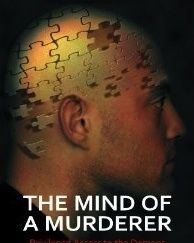Media
Murder Mentors for Copycat Killers
Some serial killers pattern themselves after others they admire.
Posted July 23, 2013

A foul odor in East Cleveland led police last Friday to a dead body … and to Michael Madison, a 35-year-old convicted sex offender. Then there were two more bodies wrapped in plastic trash bags before being dumped in a nearby house and yard.
Madison had exploited the many foreclosed or abandoned homes in East Cleveland to hide his gruesome deeds. Police suspect they will find a few more victims.
Like another Cleveland serial killer, Anthony Sowell, Madison’s comfort zone for killing was close to home. In fact, he’d reportedly looked to Sowell’s example and had threatened to do the same thing. "He [Madison] said some things that led us to believe that in some way, shape, or form, Sowell might be an influence," the East Cleveland mayor, Gary Norton, told the Associated Press.
In 2009, the mostly nude bodies of 11 women were found in garbage bags and plastic sheets throughout Sowell’s home and yard. Since then, he’s been convicted and sentenced to death.
Madison probably figured this wouldn’t happen to him. He’s like other killers who find inspiration in “murder mentors.” They study the methods and believe they can avoid the mistakes.
Colin Ireland and Dennis Rader both researched other killers in order to fit the criteria of a serial killer. Both even called in their crimes to media or police to ensure that investigators would make the right links. They wanted credit.
Rader’s primary role models were H. H. Holmes (19th century) and Harvey Glatman (1950s). Rader was fascinated with how Holmes had created a sophisticated persona as an educated gentleman while simultaneously luring women into his fatal traps. Once finished, he’d strip the flesh off their corpses and sell their skeletons to corpse dealers for medical schools. He’d accomplished this in the midst of a bustling city, Chicago, with no one the wiser until he screwed up in Philadelphia.
Israel Keyes, who committed suicide in prison last year after he was arrested for killing a young woman in Alaska, was a student of Ted Bundy. He mentioned being interested in serial killers “because that’s what I was.” Although he denied patterning himself on anyone, it's clear that Bundy was his role model.
During the 1970s, Bundy had murdered at least 30 girls and young women in half a dozen states from the Pacific Northwest to Florida. He’d honed the sort of double life to which Keyes aspired, passing as a law student while killing as he pleased. Keyes studied the true crime books about Bundy, paying special attention to Bundy’s errors. That part he did not want to repeat.
In 1977, officials had transported Bundy to Colorado to face murder charges there, but he escaped and went to Florida. Around this time, Keyes noted, Bundy had grown careless. On January 15, 1978, Bundy entered a sorority house without a plan and attacked five women, killing two. A month later, he grabbed a twelve-year-old girl in broad daylight. Soon thereafter, he was caught in a stolen car. Convicted of three murders, he got three death sentences.
It was mostly thoughtlessness that tripped him up, Keyes believed. Bundy had put a lot of miles on his own car as he drove around the Western states, and had paid for gas with a credit card. This all became circumstantial evidence against him. So Keyes had rented cars, robbed banks, and buried cash and murder kits in places where he could later return to seek victims. He avoided paper trails.
Bundy described a malignant being – an “entity” – that emerged from him when he was tense or drunk. Keyes had felt something similar, so he found much about Bundy with which to identify. Like Bundy, the idea that he got away with murder made him feel powerful. And, like Bundy, he got careless. Even in a rental car, far from Alaska, using only cash, Keyes was caught.
Jimmy Rodes, in the same prison with Bundy, reportedly asked for predatory advice. Bundy supposedly slipped him a newspaper with personal ads circled and Rodes used one to start a correspondence there. When he later got out of prison, he left a trail of his own victims. Rodes, alias Cesar Barone, was convicted of four murders.
Murder mentors, knowingly or unknowingly, provide one or more of several things for wannabes: 1) as role models, their MO offers a frame for how to carry out murder and hide bodies; 2) their boldness can be empowering; and 3) media attention gives them an exciting aura. The more celebrity a serial killer attains, the more attractive he is to copycats.
Madison, once-convicted, knew that to continue his assaults without getting caught, he’d have to kill the witnesses. He had but to look around to see all the abandoned houses as seemingly perfect hiding places. He had but to read in the papers about Anthony Sowell’s method of wrapping victims in plastic. He had but to feel a strong enough need to act. From there, it’s a short path to becoming a copycat.
Mayor Norton sums it up: "Unfortunately, this is a sick individual who appears to have been influenced by another sick individual.” Madison certainly won't be the last.




